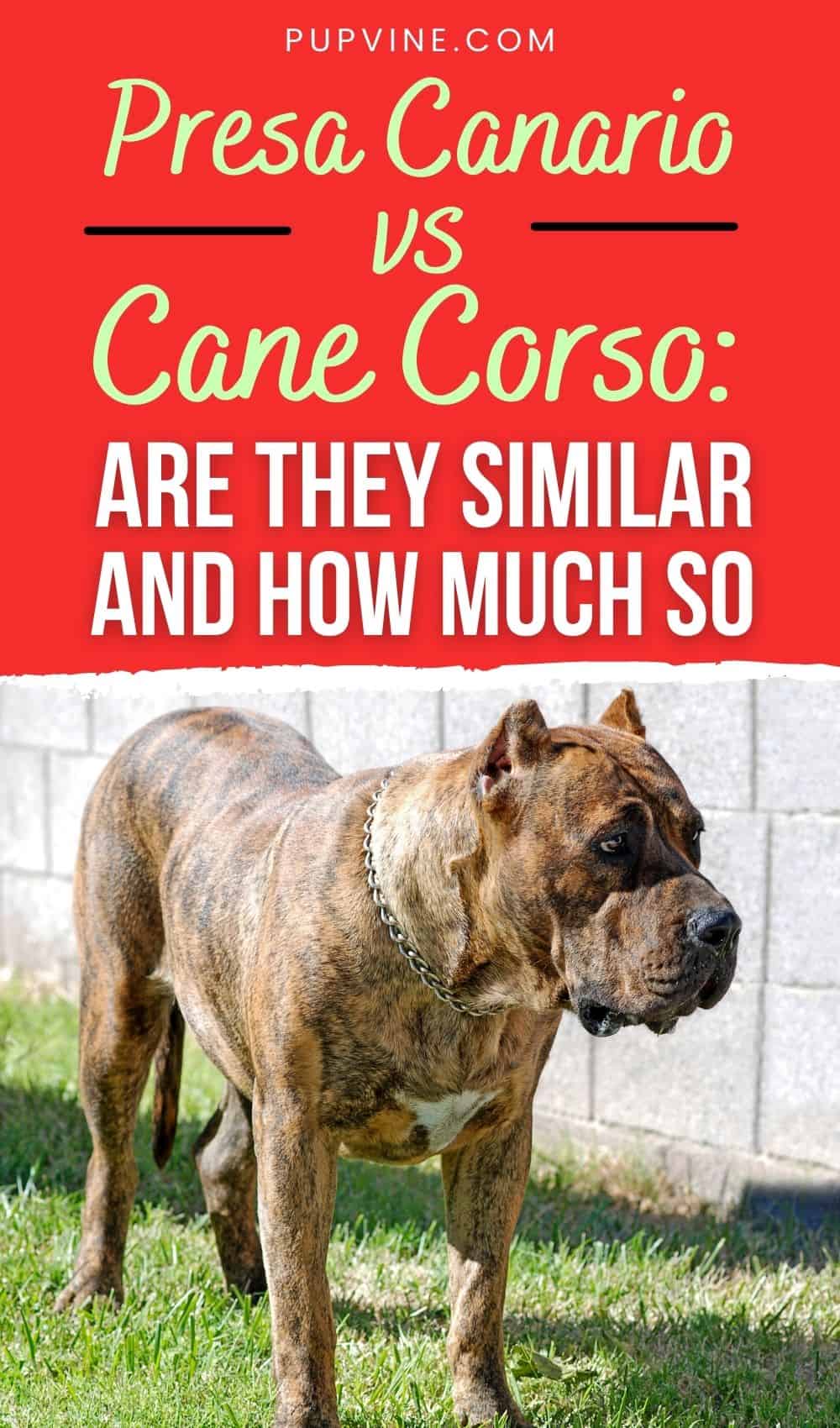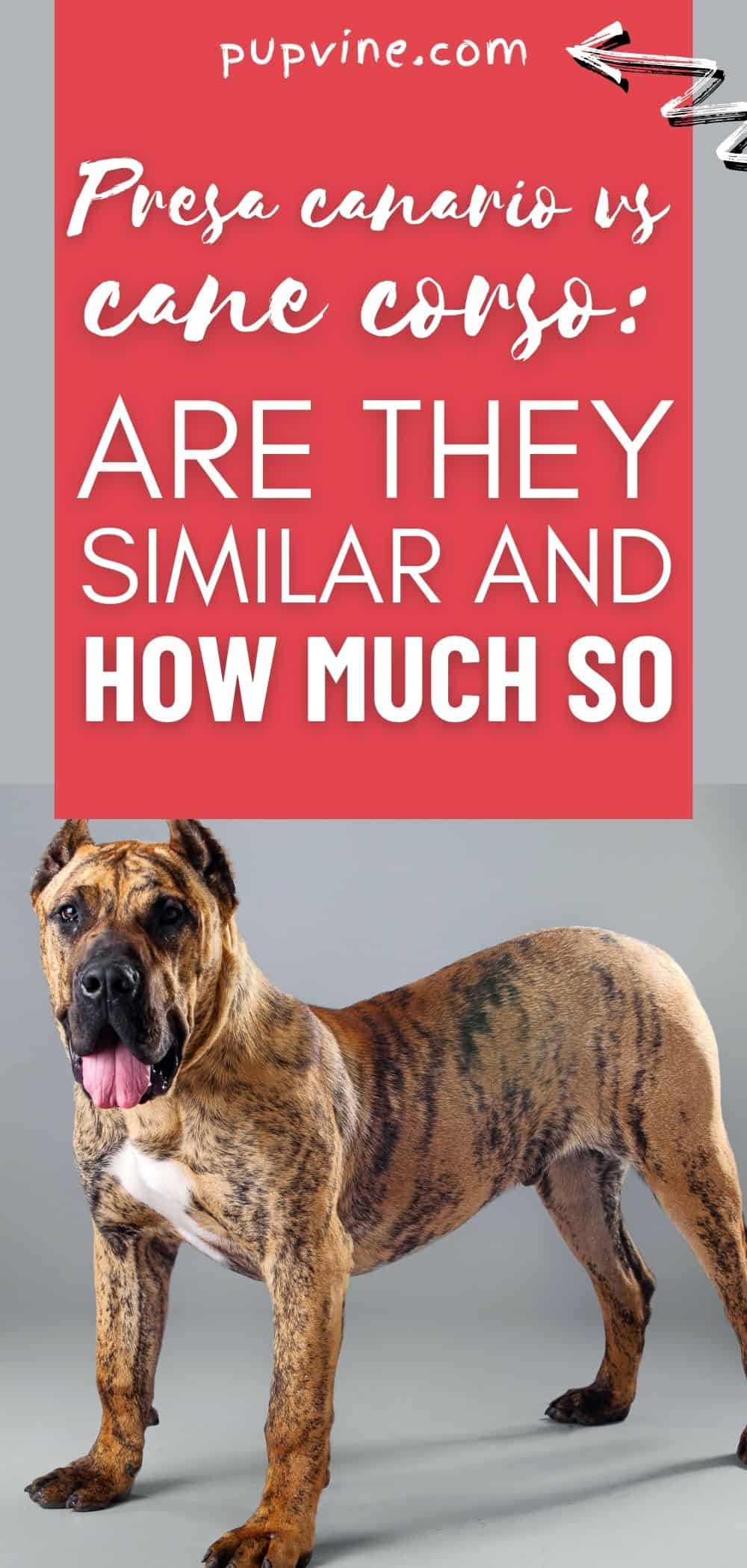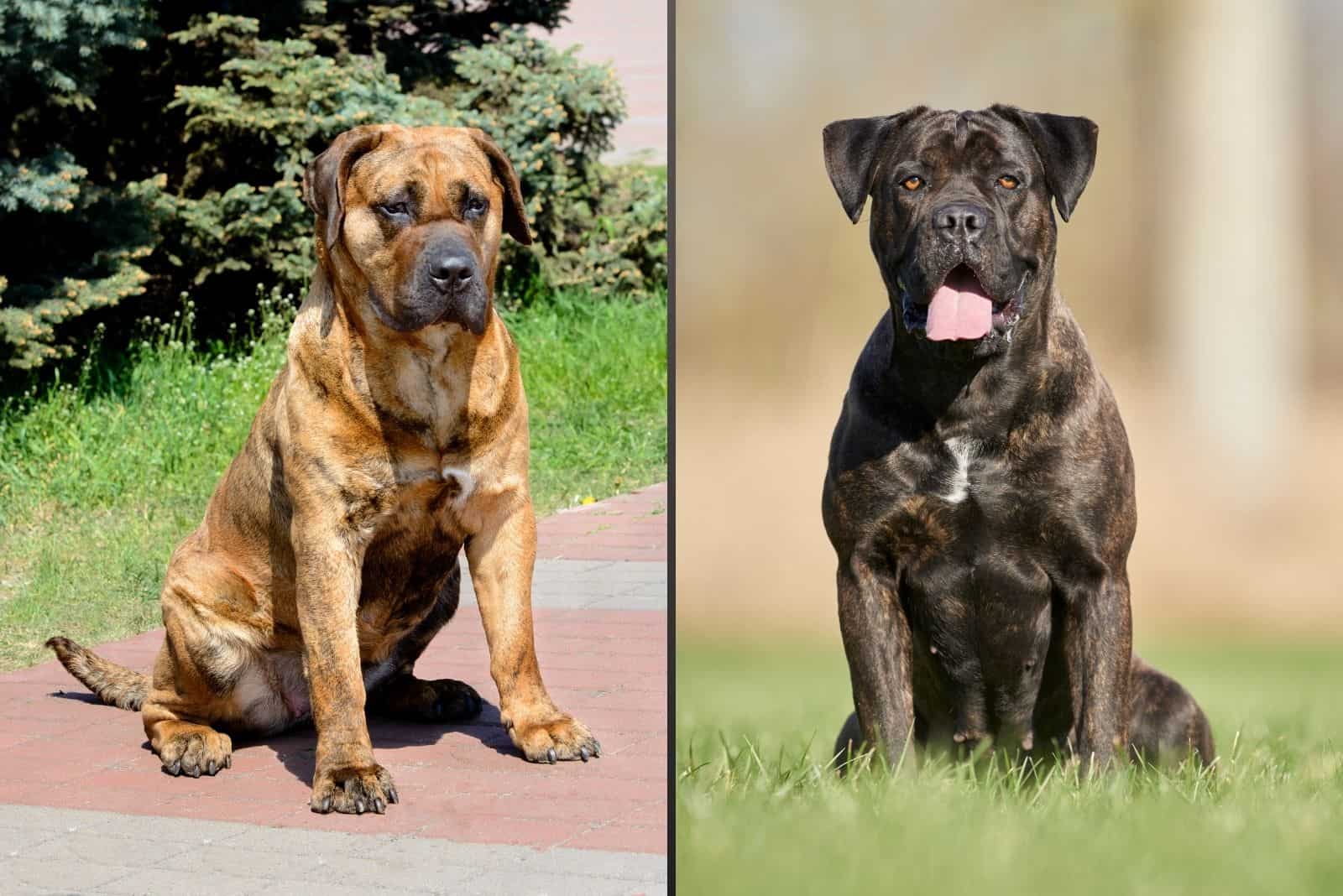Presa Canario vs Cane Corso is a battle of the gentle giants. Still, not many dogs have such a bad reputation as Presa and Cane.
These gorgeous giants are even banned from some countries, regardless of the AKC recognition, which is quite unfair for this dog breed!
Yet, many dog owners find their looks and temperament to be just what they need. Some go with Presa while others opt for Cane.
It’s really a matter of preference here: will you go for the looks, the temperament, or their usefulness?
But, aren’t they the same? Actually, they are more different than you might think. They’re only very similar dog breeds and nothing more. Cousins, if you prefer!
Who will dominate this battle and become your dog of choice? Let’s list all the facts and see which pup will win your heart!
The History of Perro de Presa Canario and Cane Corso
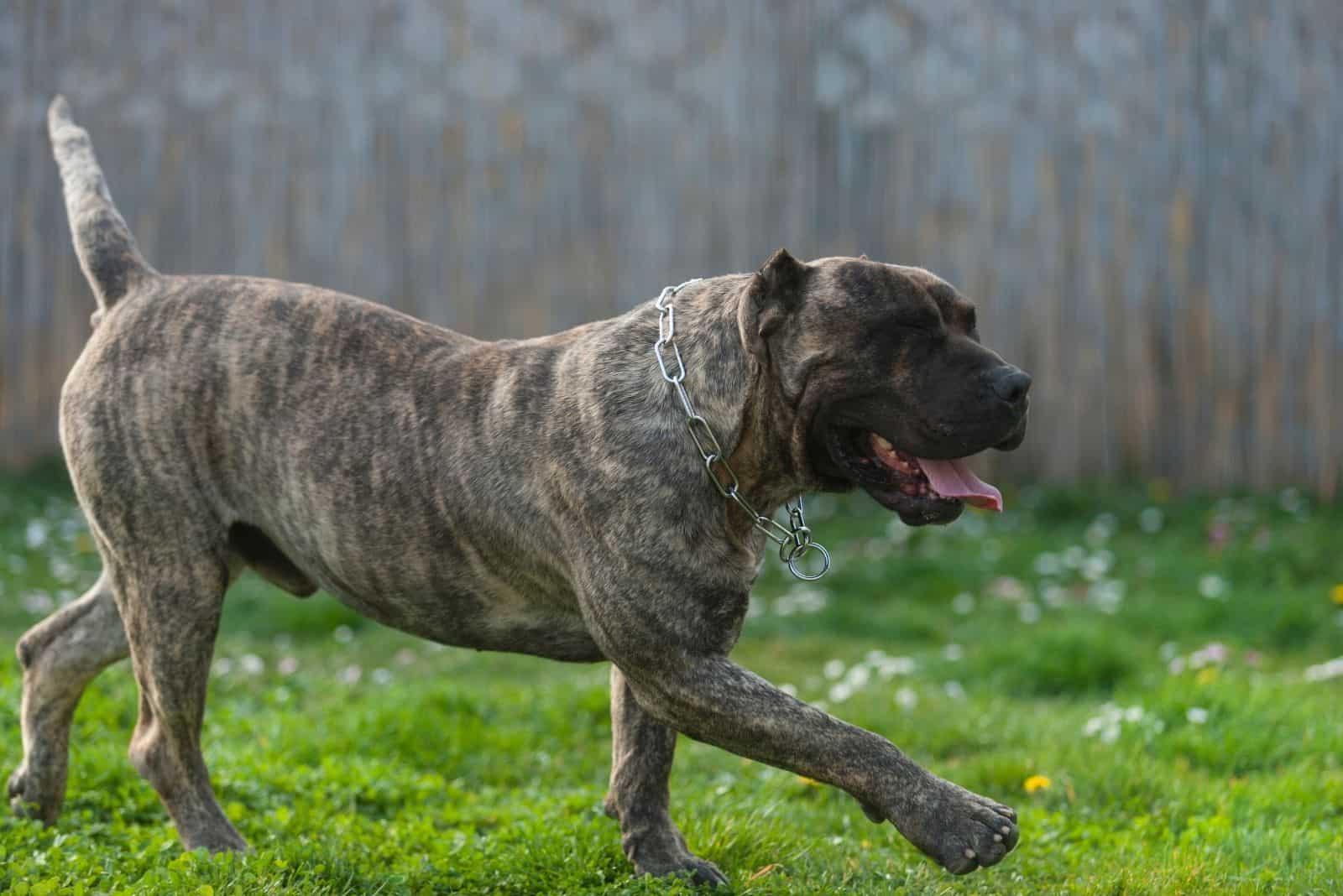
If you think Presa Canario and Cane Corso share the same origin, you are wrong.
Cane Corso and Presa Canario have different origins, but they’re a mastiff breed, which includes dogs like the bullmastiff, the bulldog, the bull terrier, the boerboel, the pitbull, the dogo argentino, the rottweiler, etc.
The Italian Cane Corso was bred to serve as a guard dog and a hunting companion, while the Presa Canarios were used in working with livestock.
Originally from the Canary Islands, Presa Canarios were bred to serve as guard dogs and for herding cattle. This dog breed has a history dating back to the 13th century!
However, their role was sometimes ungrateful. These dogs had to fight wild dogs to save the cattle. Such a job led this dog breed near extinction in the 1940s.
Introducing the island to new dog breeds, like the Great Dane, the Doberman, and the German shepherd only made things worse for the Canarios as dogfighting was happening on a daily basis.
Thanks to the 1970s intensive breeding program, the Presa Canarios were saved.
Much like his friend, the Cane Corso was almost near extinction during both World Wars. You can say this dog breed was once a war hero in Italy.
Here’s a historical fun fact: Cane Corsos were used to attack the enemy lines, armed with flaming oil buckets on their backs.
Back home, these dogs weren’t any less courageous. They were the guardians of the flock and the farm, hunting dogs, and a beloved, big cuddly giant who loved his family.
Appearance Comparison: Are These Dogs Similar?
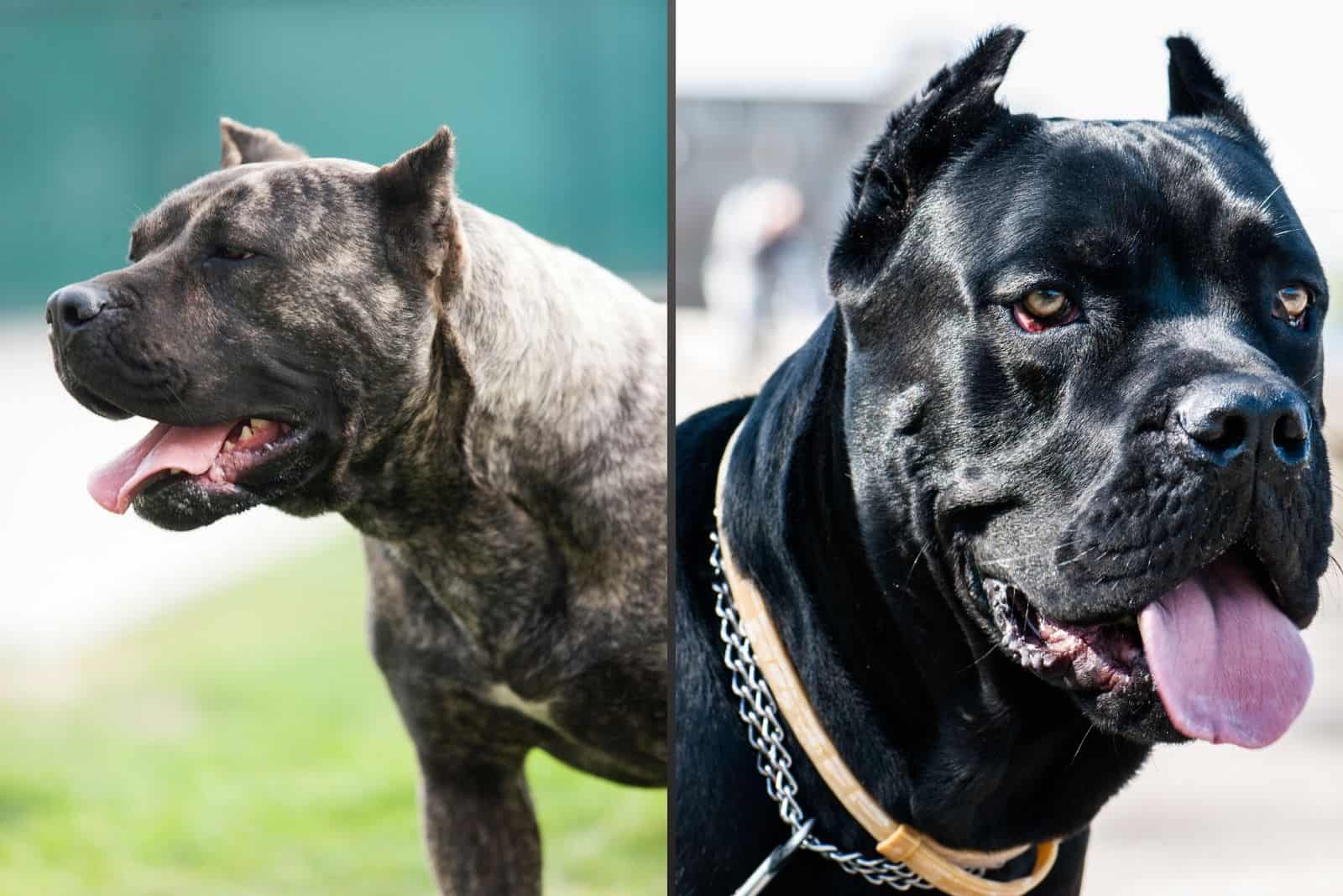
No wonder you once thought these dogs were the same. After all, they have a similar bloodline!
These dogs belong to the Molosser group, which means they’re solidly built, large dogs who come from the same ancestor.
In order to distinguish these dog breeds more clearly, let’s look at each one carefully.
Cane Corso
The Cane Corso has a very well developed muscular body with almost 50 kilos, and is up to 70cm in height. You can look at the Cane Corso growth chart if you want to know just how big these dogs get!
The skin of a Cane Corso is tight, but some dogs are still left with flaps and hanging jaws.
To help you distinguish a Cane Corso from other similar breeds, here’s what you should be on the lookout for:
• a shorter, wide muzzle
• medium-sized ears
• a docked tail
A Corso’s short hair can be black, dark, and light shades of grey, dark and light shades of fawn, and red. Any of these colors can have a brindle pattern in light and dark colors. Solid fawn and red Corsos might have a black or grey mask.
Their coat hair is short and stiff with a light undercoat.
One can say the Cane Corso dog is a mighty specimen of the canine world.
Presa Canario
The Perro de Presa Canario may appear intimidating at first. These are, indeed, large dogs with a heavy and rectangular body.
Contrary to their robust build, the coat on a Presa is silky smooth and could be colored black, brown, fawn, grey, gold, orange, silver, or tiger.
According to the Presa Canario growth chart, the male specimen can weigh up to 45 kilos and grow up to 65 cm! A true giant!
Now imagine how big a Cane Corso Presa Canario mix can grow to be!
As you can see, both dog breeds show similar traits in their appearance, especially when it comes to size and body size.
The only notable difference in their outer looks is the color. That could be the only reason why someone would pick a Cane over a Presa.
Temperament: Which One of These Large Dog Breeds Suits You the Best
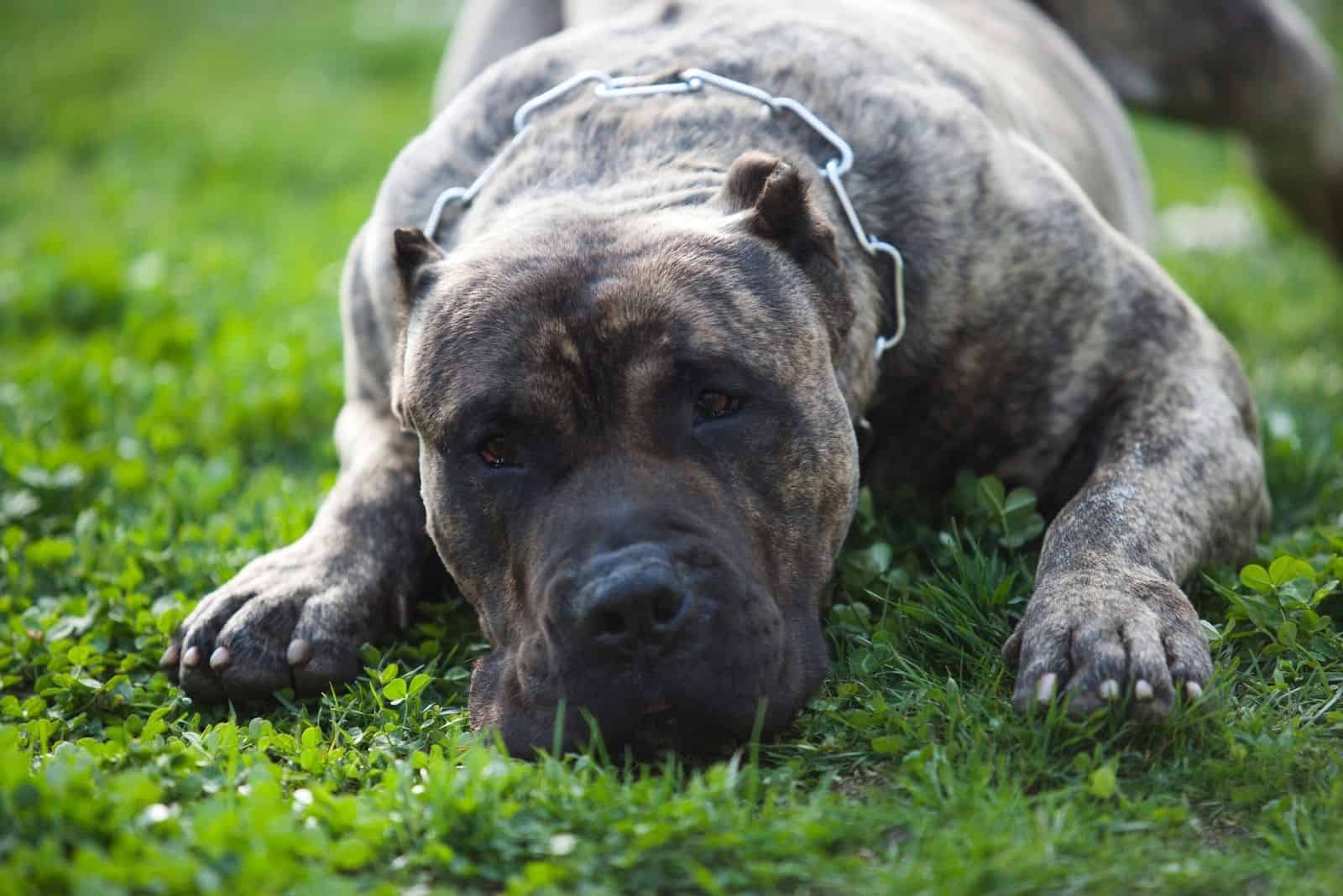
So similar, and yet so different! Presas and Canes are very much alike, but there are still traits that distinguish one from the other.
Both dog breeds are highly intelligent, very loyal, and eager to please their master. A strong character like them needs a confident leader.
Taking their origin into consideration and what they were used to doing back in the day, both dogs will act as protectors of the family.
The Cane Corso’s Latin name, Cohors, means the guardian. That’s exactly what this dog is! A true guardian of his master, highly suspicious of any strangers. Canes always seek their master’s approval.
However, this dog breed is much more sociable than the Presa. Cane Corsos openly show affection to their family members. They are nothing like their exterior portrays them to be.
Nonetheless, this doesn’t mean that Presa Canarios aren’t a family dog. But, there is always a “but”. If you’re thinking of bringing an adult Presa Canario to live with your kids, you might want to reconsider that decision.
A Presa Canario has a higher prey drive, which means little children or even small pets might be seen as their prey. Still, nothing is lost yet. A Perro de Presa Canario puppy is a much better and safer choice.
These puppies, when growing up together with kids, should be just fine. Socialization plays a huge role in their upbringing, and it’s of the ultimate importance to connect with these pups.
Keep in mind that these dogs are large. Leaving them alone with small children is not an option.
Health: Is a Presa Canario Healthier Than a Cane Corso?
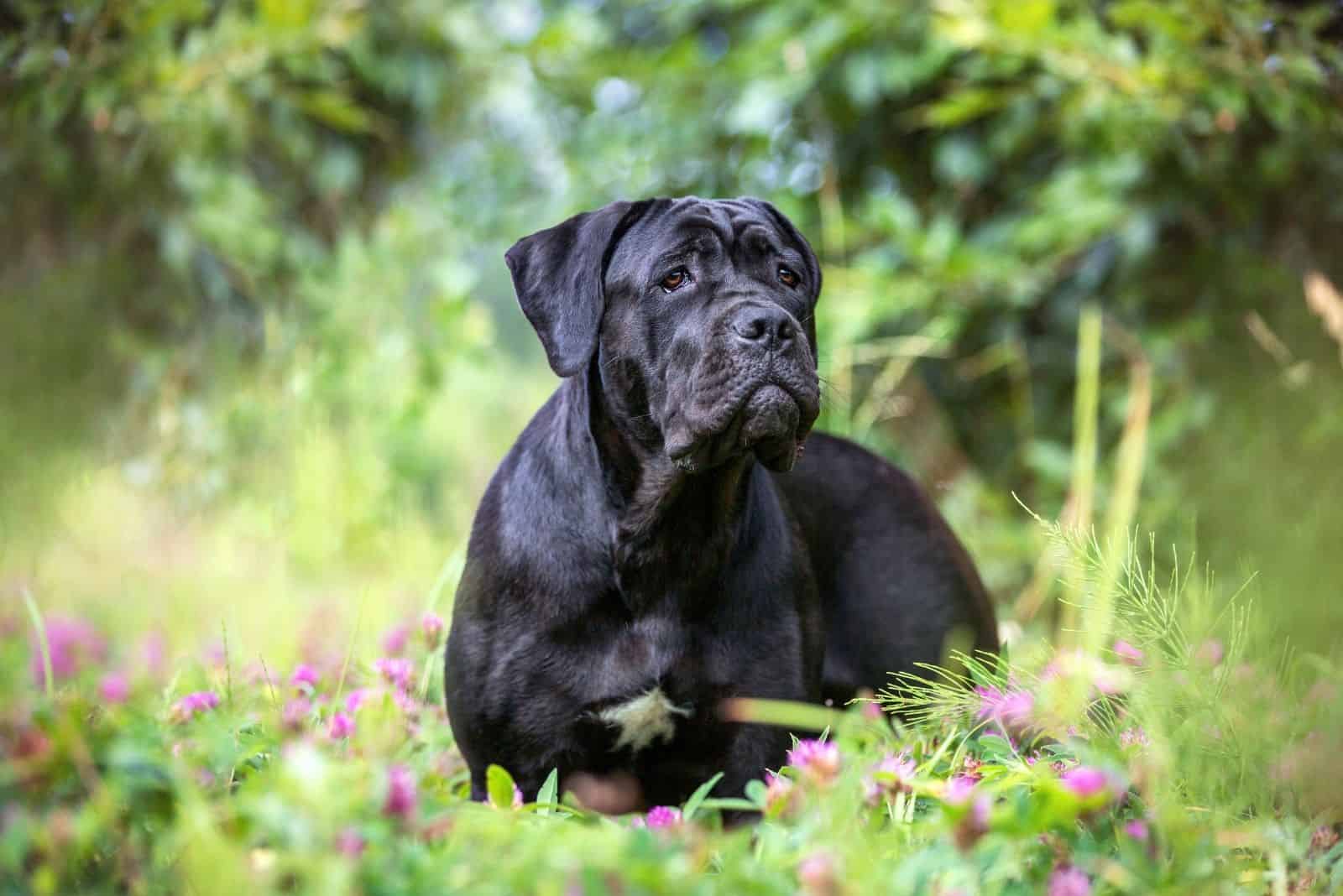
General health characteristics could be the ones to decide if you should bring a Cane or a Presa among your family members. Not every dog suffers from the same health condition. It would be terrible if they did!
Perro de Presa Canarios and Cane Corsos have only one common health issue – hip dysplasia!
Hip dysplasia is a condition characteristic of large dog breeds. Truth be told, this condition could affect any dog breed or size, but it mostly strikes big dogs. It’s painful, both for the dog and for the dog owner, and it drastically reduces life quality.
However, if you’re a responsible dog owner, fear not. Painful hip dysplasia can be avoided. Still, the condition can strike at an early age.
There are numerous causes for this condition; the first one being genetics. Dog breeds like the Great Dane, the Saint Bernard, the Labrador Retriever, and the German shepherd are especially affected.
Other factors include:
• excessive growth rate
• improper weight and nutrition
• types of exercises
The excessive growth rate, as one of the biggest causes of hip dysplasia, can be prevented. The solution lies at the bottom of a kibble bag… a high-quality kibble bag designed especially for large breed puppies.
In a nutshell, slowing down growth is quite possible. This way, there’s no pressure or strain at the joint that could cause hip and elbow dysplasia and other joint conditions.
But beware, this doesn’t mean you should stuff your dog with food such as turkey for Thanksgiving. Obesity causes tremendous pain in the joints that can aggravate or cause hip dysplasia.
Proper food and a normal amount of exercise are ground steps to keeping your dog’s joints intact.
It’s best if you pay attention to your Cane Corso puppy or Perro de Presa Canario puppy for the following hip dysplasia symptoms:
• decreased activity
• decreased range of motion
• lameness in the hind end
• “bunny hopping” gait
• grating in the joint during movement
• loss of thigh muscle mass
• difficulty when jumping, running, rising, or climbing stairs
• noticeable enlargement of shoulder muscle mass
• pain
• stiffness
Unfortunately, if your Presa or Cane gets diagnosed with hip dysplasia, there are treatment options that could make their life quality somewhat better… that is unless your dog is a candidate for a hip dysplasia operation.
Depending on how severe the dysplasia is, your vet might suggest the following treatments:
• weight reduction, in other words, diet to put less pressure on the joints
• exercise restriction, especially on hard ground
• joint supplements
• physical therapy
• anti-inflammatory meds, like corticosteroids
• joint fluid modifiers
Mild cases of dysplasia can be eased by using some of these methods. But, with severe cases that need surgery, you can consider three different parts of the surgery.
The three different hip dysplasia operations are:
• DPO/TPO, Double or Triple Pelvic Osteotomy
• FHO, Femoral Head Ostectomy
• THR, Total Hip Replacement
• DPO/TPO
This procedure is usually conducted in young dogs under the age of 10 months. What the vet does here is cut the pelvic bone and rotate the segments.
FHO
FHO surgery can be performed on dogs of any age. This is more complicated surgery because it involves cutting the femoral head. The final result is a false joint that is not affected by the pressure.
FHO doesn’t wave its magic wand and make the hip dysplasia disappear. This is only a way of eliminating the pain!
THR
THR is the most effective hip surgery. The entire joint gets replaced with metal or plastic parts. This way, most of the discomfort is eliminated and the joint can go back to functioning normally.
Since hip dysplasia is a hereditary disease, prevention can happen even before the puppies are conceived. Dog breeders can screen their breeding dogs for this disease to avoid the consequences.
Don’t let any of this prevent you from getting a Cane or a Presa. Dogs diagnosed with hip dysplasia often live a long and fulfilled life, eased with appropriate treatment.
Other diseases that might affect your Presa or Cane are:
• Gastric torsion (a stomach twist that happens when a dog eats a large meal before exercising)
• Osteochondritis dissecans (when bones and cartilage break loose and cause pain)
• Panosteitis (growing pains)
• Dilated cardiomyopathy (weak heart with thin walls)
To make things clearer, here are the diseases only your Presa Canario might have:
• Epilepsy
• Hypothyroidism
• Seasonal/Food Allergies
• Entropion
• Cryptorchidism (males)
The list is a bit shorter for a Cane Corso:
• Bloat/GDV
• Demodectic Mange
• Cruciate Ligament Rupture
• Wobbler’s Syndrome
Health conditions shouldn’t be a joke, so don’t treat them as one. If you want to have a healthy pet that will stick by your side for years to come, be regular on the vet’s checkups!
Both the Cane and the Presa fill a huge hole in a man’s heart, and it would be such a tragedy to lose them too soon.
Nutrition Comparison: How to Feed a Presa and a Cane
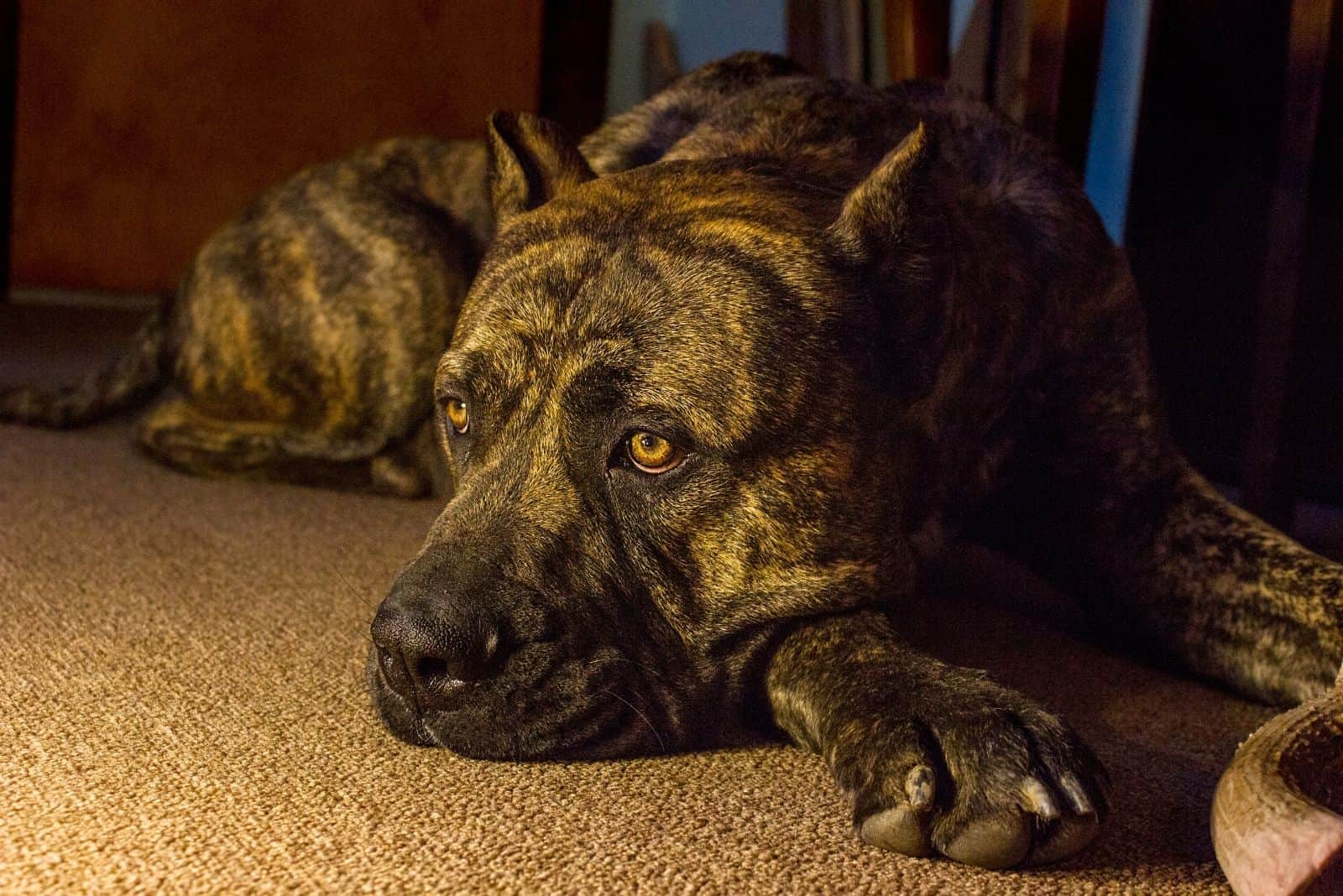
Both a Presa and a Cane have the same eating habits. These dogs need three cups of food daily.
But, not just any kibble will work! To get the best for your dog and prevent aggravated health conditions, always buy high-quality dog food.
What you have to pay special attention to is giving them treats. These dogs love getting a snack more than chasing cars. But, be careful! If you don’t control their snack intake, you’ll end up with an obese dog who has serious joint troubles.
As always, the balance is crucial.
See Also: Presa Canario Feeding Chart: Nutritional Needs Of This Large Dog
Is Grooming Hard? The Cane Corso dog vs the Presa Canario
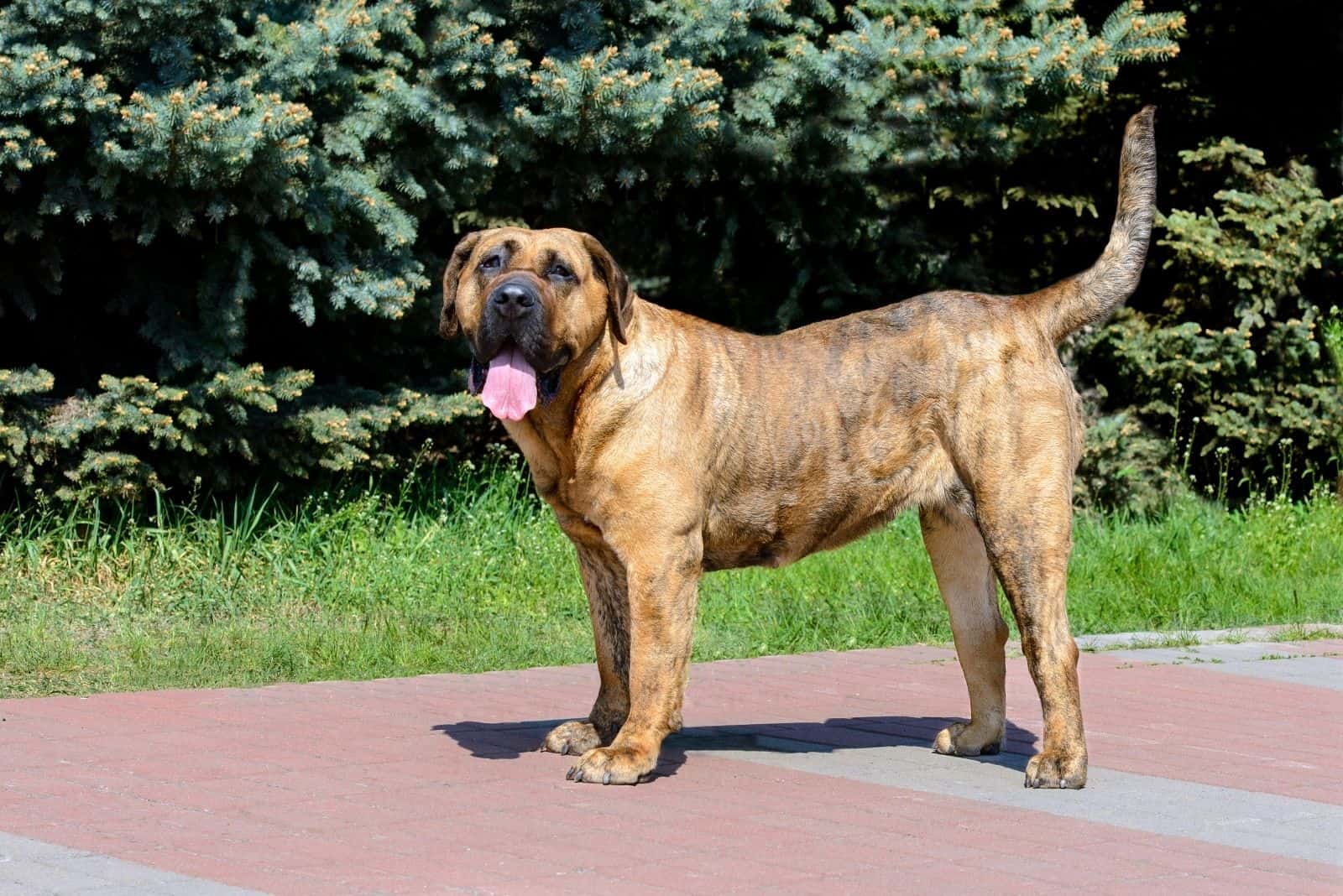
How lucky are you to hear that the Cane and the Presa are a delight for dog groomers?
These pups are light shedders and require minimum bathing. Thank Heavens for their short hair! Don’t wash them more than once every two months. Otherwise, you can cause a huge loss of natural coat oils and serious skin irritation.
Unlike his buddy, the Cane Corso, the Presa doesn’t have an undercoat, but still, both dog breeds are light shedders with the peak shedding season in springtime.
A routine of two to three times brushing a week and daily brushing during the shedding season would be just a-okay.
What makes these dog breeds a bit of a handful is – their drooling. Both of them drool, but Canes tend to do it more often. Now is a good time to think if you can or can not handle all that slobber.
Working Out: Who’s a Better Sport, the Cane or the Presa?
https://www.youtube.com/watch?v=Nq6gW2ZHP1o
One might think these huge dogs need lots of exercising time. Well, not precisely. The Presa and the Cane are medium-energy dogs and they need only sixty minutes of exercise daily.
So, who’s better at sports? It has to be the Cane Corso-breed. The Cane also requires a more intensive workout session than his friend, the Presa.
Interactive games such as tug-of-war, fetching frisbee, and running through an obstacle field will provide the much needed physical exercise as well as mental stimulation.
Good news for jogging fans: both of these dogs make excellent jogging partners. You can kill two birds with one stone there. So, the next time you’re off jogging, don’t forget a leash for your big buddy!
Don’t even think to keep these dogs unamused. Bored dogs are more likely to develop aggression, and thus, destructive behavior. No one wants to see a Presa or a Cane demolish their place. Really, NO ONE.
Which Dog Breed is Easier to Train: a Presa Canario or a Cane Corso?
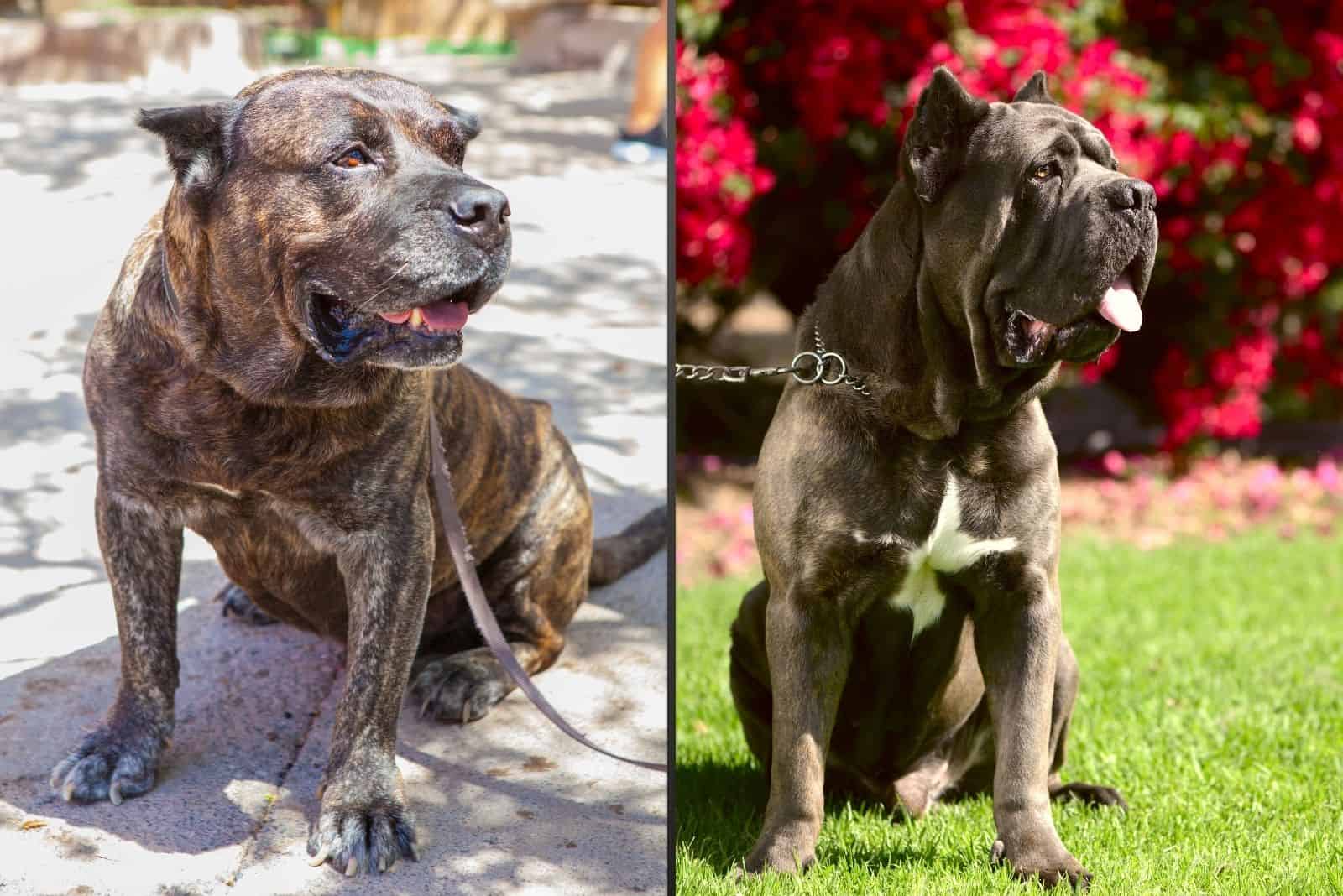
As mentioned before, these dogs are extremely intelligent, so training them could be a piece of cake. One of the ground rules is to assert your dominance. These dogs will definitely listen to a dominant master.
Be your own pack leader, confident and strong enough not to allow the dogs to take advantage of you. If you give them a chance, they will. Once they realize you are not dominant anymore, it will be difficult to get them back on the right track.
The first step towards a well-trained Cane or Presa is establishing socialization early. The breeds need to learn how to be calm and comfortable in a variety of situations.
Cross this off your list during puppyhood and you’ll have a nicely-behaved dog in the future.
Positive reinforcement is something that works on both pups!
Teaching them how to be obedient is stage number two. The training includes even the tiniest actions like asking them for a paw before giving them a treat. Nothing goes for free.
A Presa is much more stubborn than a Cane. The moment you allow him to have leadership, he will get uncontrollable. These pups require constant training, which makes them more difficult pets than Corsos.
The Money Talk: Who is More Expensive?
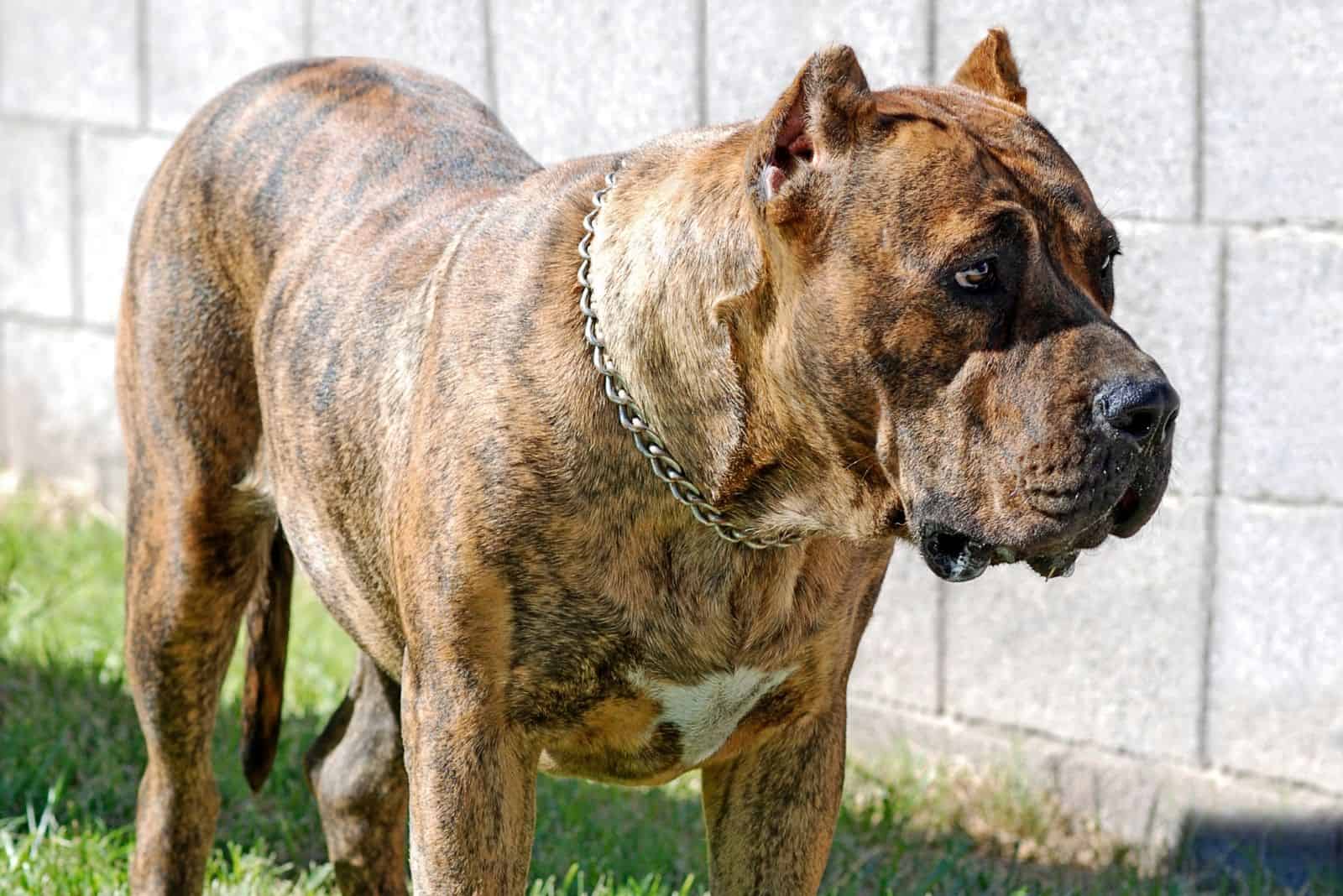
The Perro de Presa Canario puppy is slightly more expensive than the Cane Corso puppy. A reputable breeder could have Presa puppies between $1,800 and $2,000. Corso puppies go between $1,500 and $1,800.
On the other hand, working specimens of these breeds cost even more! The reason behind this is their way of training and upbringing.
Also, it is quite likely that they were bred from a specific bloodline. Always buy from a reputable breeder.
Puppyhood is very important for these guys. This is where you show them who’s boss. Letting it slip buy and letting the dog act as he wants might create a disaster.
Long story short…
A Presa Canario and a Cane Corso ARE indeed similar dog breeds, especially when it comes to their outer looks. These two dogs share many traits like their coat color and their body size.
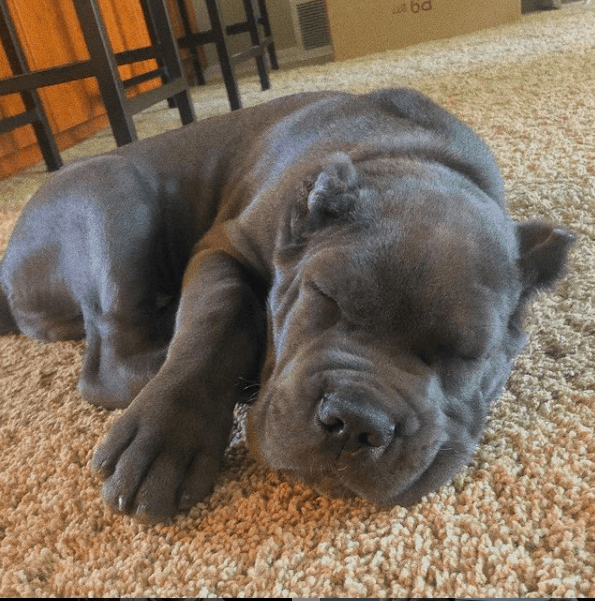
But…
What they don’t share is temperament. Presas and Canes come from similar origins, but they are not both born to be family dogs.
Canes have learned how to adapt and live with other family members while Presas became a bit unsuitable for a family lifestyle. Still, they can be protective and sociable.
When picking out which breed suits you the best: Presa Canario vs Cane Corso, one must have in mind the reason for getting these dogs. Is it for family protection? Maybe, estate guarding?
Only you can decide which one of these big, loveable giants to get. But, one thing is for sure: no matter which one you pick, you’ll get a loyal dog with a heart the size of Italy!
Can’t get any better than that, can it?
